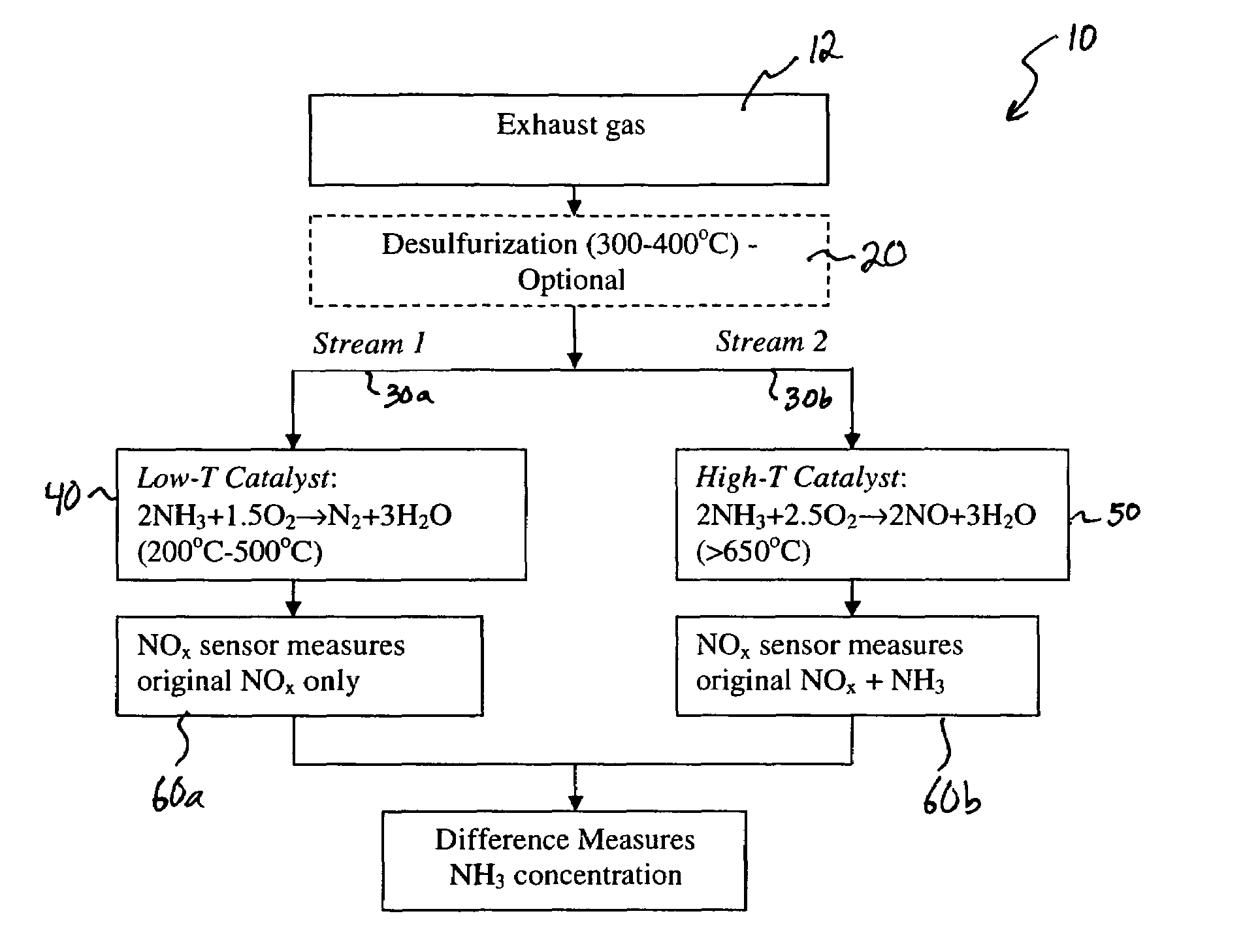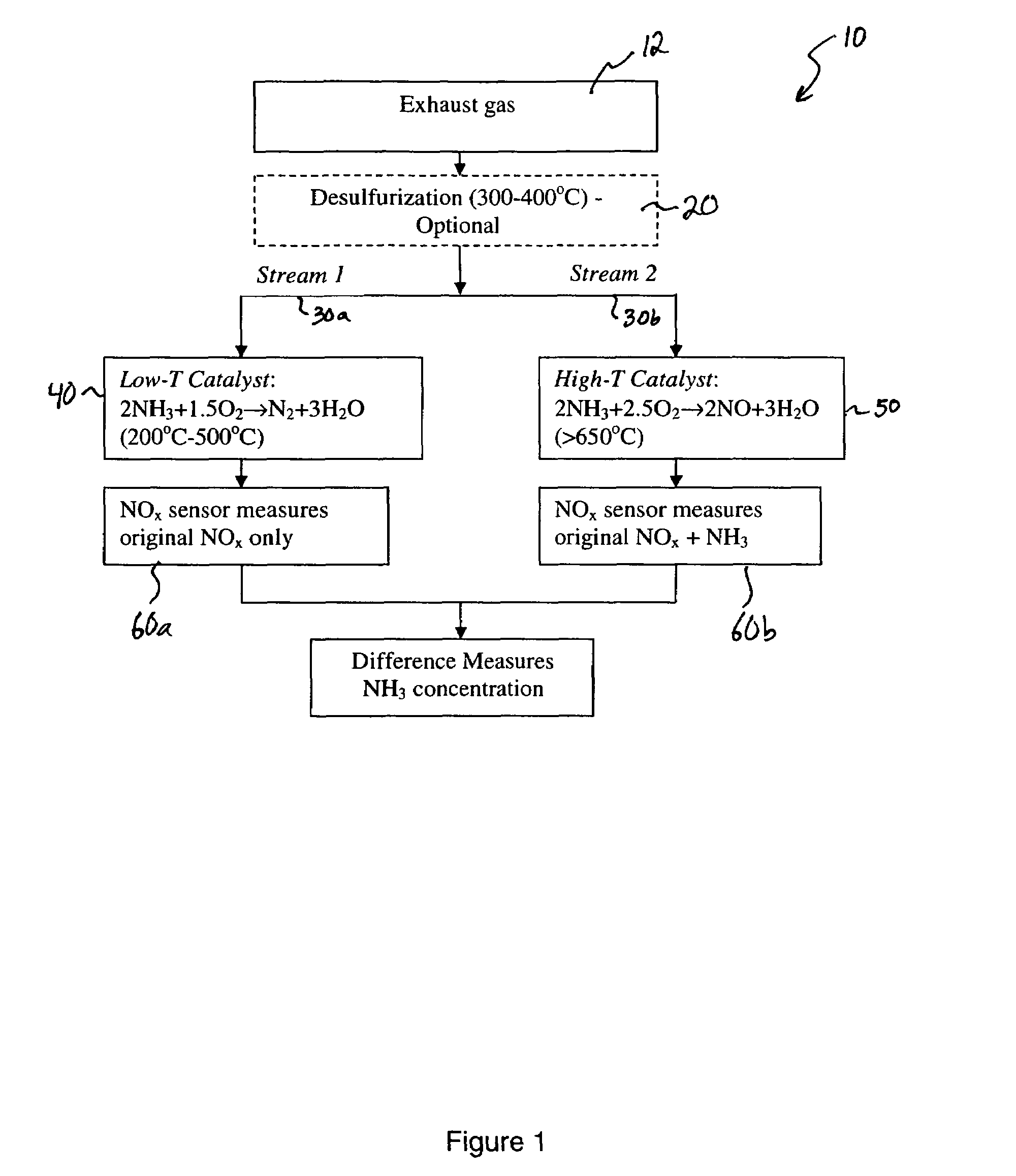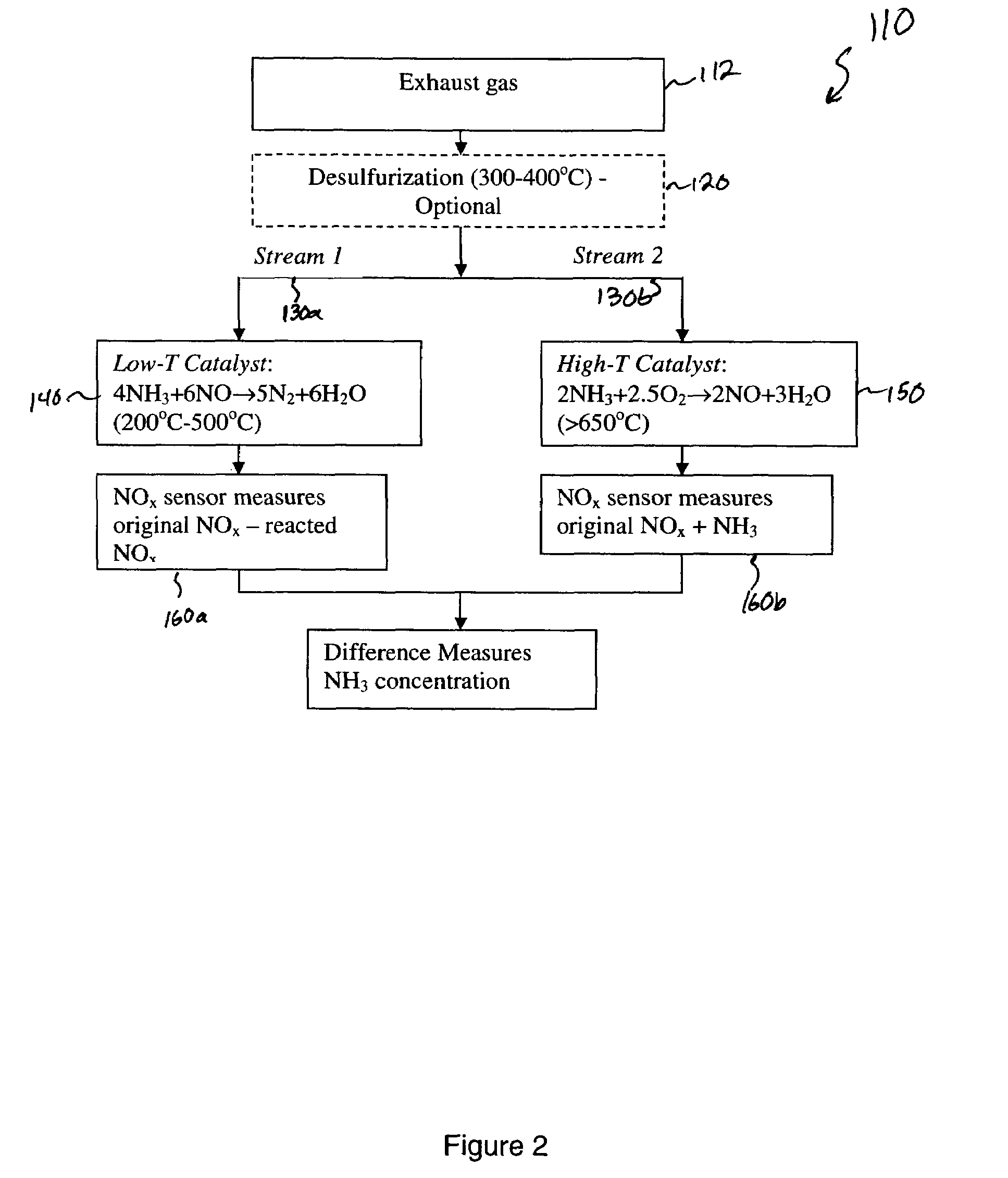Ammonia gas sensor method and device
a technology of ammonia gas and ammonia gas, which is applied in the direction of instruments, material heat development, material electrochemical variables, etc., can solve the problems of inability to properly function of current and used ammonia sensors, long lag time, and inability to use high temperature techniques. to achieve the effect of accurate determination of the total nh3 concentration
- Summary
- Abstract
- Description
- Claims
- Application Information
AI Technical Summary
Benefits of technology
Problems solved by technology
Method used
Image
Examples
example 1
[0035]An experiment was set up to test the concept of using a catalyst at two different temperatures so that when the gas passes through the high temperature catalyst all of the NH3 is converted to NO and when the gas passes through the low temperature catalyst the NH3 is converted to N2 and H2O. A catalyst was fabricated by chopping up some high purity Al2O3 insulation felt into small chips approximately 1 mm×1 mm×1 mm. The felt chips were then impregnated with a RuCl2 solution followed by drying at 80° C. for 1 hour. The dried impregnated chips were then installed into a test apparatus that was a ⅜″ outside diameter stainless steel tube with compression fittings attached to each end of the tube. The felt chips were held in place with a piece of nickel mesh on each side of the bed of chips to keep them properly located within the stainless steel tube and prevent them from being displaced by the flowing gas. The tube apparatus was then installed in a small tubular resistively heated...
example 2
[0037]A second experiment was set up to test the concept of using a catalyst at two different temperatures so that when the gas passes through the high temperature catalyst all of the NH3 is converted to NO and when the gas passes through the low temperature catalyst the NH3 is converted to N2 and H2O. A catalyst was fabricated by mixing 10 wt. % La2O3 / Al2O3 followed by infiltration of Nickel nitrate to produce a 15 wt. % Ni composition. This precursor powder was then dried and calcined at about 800° C. in air. The calcined powder was then installed into a test apparatus that was a ⅜″ outside diameter stainless steel tube with compression fittings attached to each end of the tube. The packed powder was held in place with a piece of nickel mesh on each side of the bed of powder to keep it properly located within the stainless steel tube and to prevent the powder from being displaced by the flowing gas. The tube apparatus was then installed in a small tubular resistively heated furnac...
PUM
| Property | Measurement | Unit |
|---|---|---|
| temperatures | aaaaa | aaaaa |
| temperatures | aaaaa | aaaaa |
| temperatures | aaaaa | aaaaa |
Abstract
Description
Claims
Application Information
 Login to View More
Login to View More - R&D
- Intellectual Property
- Life Sciences
- Materials
- Tech Scout
- Unparalleled Data Quality
- Higher Quality Content
- 60% Fewer Hallucinations
Browse by: Latest US Patents, China's latest patents, Technical Efficacy Thesaurus, Application Domain, Technology Topic, Popular Technical Reports.
© 2025 PatSnap. All rights reserved.Legal|Privacy policy|Modern Slavery Act Transparency Statement|Sitemap|About US| Contact US: help@patsnap.com



